
Original Link: https://www.anandtech.com/show/2373
November 2007 Budget Buyers' Guide
by Jonathan Maloney and Jarred Walton on November 8, 2007 4:00 AM EST- Posted in
- Guides
Introduction
Low-end PCs have a reputation for being sub-standard, underpowered, and barely better than off-the-shelf PCs. However, low-end merely refers to the price, and right now companies like AMD, Intel, and NVIDIA are throwing out quality components for prices that traditionally belong with outdated or inadequate hardware. You just have to know what to look for. In this guide we will be taking a look at both the entry-level and budget gaming offerings, with comments and suggestions specifically on stability, quality of components, and - with the budget gaming systems - balancing budget and quality with overclocking and stability.
In the time since our last Budget Guide in April, we have witnessed some major changes to the hardware market that have affected our decisions. Both AMD and Intel refreshed their CPU lineups with die shrinks, simultaneously increasing performance while reducing power consumption. This of course also allowed for further price cuts in the ongoing CPU price war. Both companies are facing imminent product launches, Intel with their Penryn refresh of the Core 2 architecture and AMD with the much-delayed Phenom processor family - including the native quad-core Barcelona/K10.
NVIDIA just recently launched their second generation of DX10 hardware in the 8800 GT 512MB - or should we say, they released a refresh of the first generation that appeared a year ago. The 8800 GT 512MB is a tweaked version of the high-end 8800 GTS/GTX series built on a smaller 65nm manufacturing process. Because of the ability to produce more GPU chips on each wafer, the card comes with a lower price tag and a move to the midrange sector. Especially exciting is that this card is being priced between $200 and $250, cheaper than the 8800 GTS (320MB and 640MB) and GTX (768MB) but with performance almost on par with the $500 8800 GTX. The best part is, at this price, we've managed to create a powerhouse of a budget gaming rig for just a tad over $1000.
With Vista now approaching its first birthday, driver issues are (for the most part) no longer a problem. That means it's finally time to justify the purchase of DX10 hardware if you haven't already, right? Well, yes and no. There are still issues with Vista, ranging from SLI incompatibilities to missing soundcard drivers and the oft-rumored slowdown of performance in Vista vs. XP machines. Indeed, many users chose to revert to Windows XP after encountering stability or performance issues under Vista, while others are arguing that current DX10 titles don't justify the cost of an upgrade. However, is XP still an alternative? Although our inclination is to believe performance is still better in XP - the OS memory footprint is certainly much smaller - we are in no doubt as to the future of Windows, and our choices reflect that.
AMD Entry-level PC
With few releases for the entry-level AMD market since our last Budget Buyer's Guide, we have a very similar level of components - albeit with a doubling of RAM that should boost performance nicely in Vista. This boosted performance comes in at $100 cheaper than six months ago as well. Although that may not sound like much to an enthusiast gamer that can spend five times as much on a graphics card, for the budget computer users $100 is a 10% reduction in price. For businesses looking at upgrading hundreds or even thousands of computers, that sort of savings is even more significant, making now a great time to purchase AMD hardware.
| AMD Entry-level PC | |||
| Hardware | Component | Price | Rebates |
| Processor | AMD Athlon 64 X2 4000+ (2.1GHz 65W Brisbane 2 x 512KB L2) |
$66 | - |
| Motherboard | Foxconn A690GM2MA-8KRS2H AMD 690G mATX |
$49 | $20 |
| Memory | Crucial Ballistix 2GB (2x1GB) DDR2-800 PC2-6400 | $90 | $40 |
| Hard Drive | Samsung Spinpoint P Series SP2504C 250GB 7200RPM SATA 3.0GB/s |
$63 | - |
| Optical Drive | Samsung 20X DVDRW/DL SH-S202G | $28 | - |
| Case | Athenatech A3602BB.400 mATX w/400W PSU | $35 | - |
| Display | Hanns-G HW-191DPB Black 19" 5ms Widescreen DVI (1440x900) |
$170 | - |
| Speakers | Logitech R-20 12W 2.1 | $19 | - |
| Input | Microsoft Optical Desktop 1000 Wireless | $26 | - |
| Operating System | Microsoft Vista Home Premium OEM | $112 | - |
| Bottom Line | $658 | $598 | |
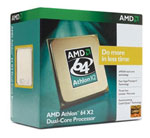 |
If money is still a concern, we could drop the processor down to a single-core Athlon 64 3200+ (2.0GHz Orleans core) at $42.99 - a savings of $23. Another option is the Sempron LE-1100 based around AMD's Sparta core, which runs at 1.9GHz, has a power draw of just 45W, and a price of just $39.99 - great for the most basic of office PCs or for those looking to save on power consumption. However, our recommendation would be to spend a bit more on the CPU and go for a dual-core; there's no doubt that these will be a pre-requisite in the next few years as application demands increase.
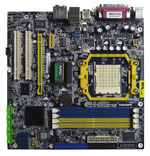 |
For the current situation, the AMD 690G with ATI's Radeon X1250 GPU chipset is still our frontrunner when choosing an entry-level AMD motherboard. The good news is that motherboards based on this chipset - and from reputable manufacturers - are available for under $50. Foxconn is one of the largest OEM suppliers in the world, producing everything from EVGA video cards to Apple MacBook/Pro motherboards and Sony PlayStation 3 mainboards. Their quality control has risen over the last few years and the somewhat long-winded A690GM2MA-8KRS2H has all the features you can find in competing motherboards, all at a significantly lower price.
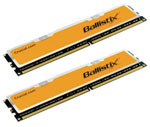 |
For the remaining items, we went with Samsung's SpinPoint hard drive series this time as availability has increased since our last roundup. The SpinPoint range is renowned for their reliability and silence, without sacrificing performance. Truth be told, while there are differences between hard drives, outside of running benchmarks most people aren't likely to notice the difference in performance. Western Digital, Seagate, and Hitachi are the other major brands, and all are worthy of consideration if the price is right.
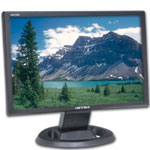 |
Intel Entry-level PC
Quite a bit has changed for Intel over the last 18 months; they were struggling against AMD's Athlon and early X2 range for much of 2005/2006, before annihilating much of the lead AMD had built up with the release of the Core architecture. After the Core 2 Duo release in July of last year, many were wondering when Intel would start to address the budget segment. The Allendale core has come down in price, but now we have the Pentium Dual-Core CPUs that use the Conroe-L design, giving Intel Core 2 chips from top to bottom. This is the first time Intel has begun to attack the entry-level area in both performance and value for money, an area where AMD has traditionally dominated. For roughly $650, you can pick up a very decent dual-core Intel system that fully washes away the performance nightmare that was the NetBurst Celeron range. At nearly $200 less than our last entry-level Intel system, this configuration will still give you the same performance, but lightens the load on the wallet tremendously.
| Intel Entry-level PC | |||
| Hardware | Component | Price | Rebates |
| Processor | Intel Pentium Dual-Core E2140 (1.6GHz 65W 1MB L2) |
$75 | - |
| Motherboard | Gigabyte GA-73UM-S2H NVIDIA GeForce 7150 HDMI mATX |
$99 | - |
| Memory | Crucial Ballistix 2GB (2x1GB) DDR2-800 PC2-6400 | $90 | $40 |
| Hard Drive | Samsung Spinpoint P Series SP2504C 250GB 7200RPM SATA 3.0GB/s |
$63 | - |
| Optical Drive | Samsung 20X DVDRW/DL SH-S202G | $28 | - |
| Case | Athenatech A3602BB.400 mATX w/400W PSU | $35 | - |
| Display | Hanns-G HW-191DPB Black 19" 5ms Widescreen DVI (1440x900) |
$170 | - |
| Speakers | Logitech R-20 12W 2.1 | $19 | - |
| Input | Microsoft Optical Desktop 1000 Wireless | $26 | - |
| Operating System | Microsoft Vista Home Premium OEM | $112 | - |
| Bottom Line | $717 | $677 | |
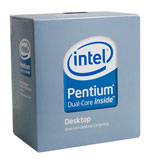 |
Unlike the CPU, the motherboards for Intel systems have yet to drop to price parity. IGP offerings for Intel come from Intel, NVIDIA, AMD, SiS, or VIA. Balancing performance, reliability, stability, and pricing, we're going with the class leading Gigabyte GA-73UM-S2H based around the GeForce 7150 IGP chipset that costs $50 more than the Foxconn board we used in the AMD system. In our eyes - even at the entry-level position - the motherboard is one area of a system where you simply cannot skimp on quality.
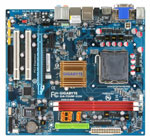 |
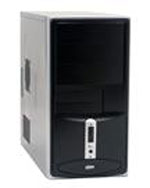 |
If we compare the two entry-level systems, it's tough to pick a winner. If you don't need much in the way of performance, you can safely save the $50 and get the AMD setup. The Intel system currently has a better motherboard (and IGP), so for those that need a bit more it's worth the additional money. For the typical entry-level PC right now, you can go either route and be happy.
AMD Budget Gaming
Leaving the entry-level sector behind, and with a budget of roughly $1000, our options increase significantly. Our aim here is to provide a configuration that allows for a nice balance of performance at stock speeds, while also giving capability and headroom for overclocking. This doesn't mean you have to spend over $1000 though, as we can trim some of our more extravagant options to keep the price to around $950 - a slightly slower CPU, a smaller hard drive, or even a smaller LCD will all help keep our budget to under $1000. For now however, this remains our pick for a budget gaming system that will carry you through the next round of DX10 titles coming our way - and all with nary a red face in sight.
| AMD Budget Gaming PC | |||
| Hardware | Component | Price | Rebates |
| Processor | AMD Athlon X2 5000+ (2.6GHz 89W Windsor 2 x 512KB L2) |
$110 | - |
| Motherboard | Biostar TForce TF570SLI AM2 nForce 570SLI ATX |
$88 | - |
| Memory | Crucial Ballistix 2GB (2x1GB) DDR2-800 PC2-6400 | $90 | $40 |
| Video Card | PNY GeForce 8800GT 512MB PCI-e 2.0 HDCP | $260 | - |
| Hard Drive | Samsung SpinPoint T Series HD321KJ 320GB 16MB 7200RPM SATA 3.0GB/s |
$75 | - |
| Optical Drive | Samsung 20X DVDRW/DL SH-S202G | $28 | - |
| Case | APEX TU150 Black Steel ATX with 400W | $59 | - |
| Display | Acer 20" AL2016WBbd 5ms Widescreen DVI (1680 x 1050) |
$200 | - |
| Speakers | Logitech X-530 70W RMS 5.1 | $55 | - |
| Input | Logitech LX-710 Laser Black USB | $55 | - |
| Operating System | Microsoft Vista Home Premium OEM | $112 | - |
| Bottom Line | $1132 | $1092 | |
 |
For overclockers, the Black Edition with its unlocked multiplier is certainly an interesting alternative. At $20 more than the standard X2 5000+ Windsor core, the addition of an unlocked multiplier and a 65W Brisbane core is very attractive - at least from an enthusiast perspective. Users across our forums are hitting speeds in excess of 3.3GHz (we hit 3.6GHz with water cooling), and at speeds above AMD's highest X2 offering - the X2 6400+ - this is a budget overclocker's dream. However, you need some sort of cooling for the CPU, as the Black Edition doesn't include a heatsink. You might have a spare, but if you don't and you prefer not to break the bank, we'd recommend the Scythe Ninja Plus Rev. B. That's a pretty hefty price increase purely for overclocking, so we're listing that as an alternative that would add a total of $55 to the system price.
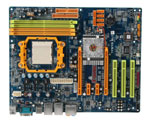 |
We're sticking with the Ballistix sticks for now (at the time of writing the $40 rebate offer was still valid for another ten days); however, options are plentiful for a budget of $50 should Crucial decide against renewing their rebate deal. Quality DDR2-800 RAM from Corsair, OCZ, G.Skill, Mushkin, and GeIL are available on any of the major online retailers. Just be sure to look for RAM with timings of 4-4-4-12 - or luck permitting, with Micron D9GMH ICs.
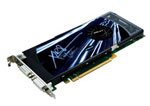 |
The remaining components have received slight upgrades over our entry-level configuration. We bumped up to a 320GB hard drive, still from Samsung. If you'd prefer a longer warranty, look at Western Digital or Seagate (but be prepared to spend a few dollars more). We selected a Raidmax Apex case with a 400W PSU, and we managed to include a laser keyboard and mouse set and 5.1 speakers both from Logitech. Again, on the overclocking side of things, seriously consider a better PSU if you can manage it.
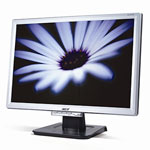 |
We get all this in a system that retails for a little over $1,000? What more could you want? If you want to upgrade or downgrade any of the areas, there are plenty of options. The 4000+ CPU from the base system would still be sufficient for most gaming, a smaller hard drive only impacts storage capacity, and the slightly larger display isn't strictly necessary either. In terms of upgrades, you can look at our last Midrange Guide for some alternatives.
Intel Budget Gaming
Traditionally, Intel offerings have tended to be on the more expensive side than configurations from AMD. However, as you shall see, this time the shoe is on the other foot, and we have a very competitive offering from Intel. It's no longer necessary to compromise performance in concession to the almighty dollar, and we are looking at two very strong budget gaming rigs from AMD and Intel.
| Intel Budget Gaming PC | |||
| Hardware | Component | Price | Rebates |
| Processor | Intel Core 2 Duo E4500 (2.2GHz 65W Allendale 2MB L2) |
$127 | - |
| Motherboard | Gigabyte GA-P35-DS3L Intel P35 ATX |
$90 | - |
| Memory | Crucial Ballistix 2GB (2x1GB) DDR2-800 PC2-6400 | $90 | $40 |
| Video Card | PNY GeForce 8800GT 512MB PCI-e 2.0 HDCP | $260 | - |
| Hard Drive | Samsung SpinPoint T Series HD321KJ 320GB 16MB 7200RPM SATA 3.0GB/s |
$75 | - |
| Optical Drive | Samsung 20X DVDRW/DL SH-S202G | $28 | - |
| Case | APEX TU150 Black Steel ATX with 400W | $59 | - |
| Display | Acer 20" AL2016WBbd 5ms Widescreen DVI (1680 x 1050) |
$200 | - |
| Speakers | Logitech X-530 70W RMS 5.1 | $55 | - |
| Input | Logitech LX-710 Laser Black USB | $55 | - |
| Operating System | Microsoft Vista Home Premium OEM | $112 | - |
| Bottom Line | $1151 | $1111 | |
 |
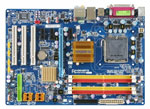 |
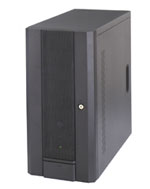 |
The rest of the components are the same as those found in the AMD budget gaming system, and with AMD's HD 3800 (RV670) series still a couple of weeks away, the 8800 GT was an easy choice. Considering that overclocking will stress the CPU, motherboard, and RAM, it may be a wise investment to upgrade the power supply to something from Seasonic, Corsair, Enermax, or even Antec. Sound cards at this budget are simply an unnecessary luxury, and although a Creative Sound Blaster X-Fi would be an addition to complete our configuration, we're happy with onboard offerings - not to mention those soundcard driver issues we mentioned at the beginning; those were issues with the X-Fi.
Closing Thoughts
Generally thought of as no more than the duty of the IT department - and completely devoid of any of the "bling" associated with the midrange to high-end PC market, boutique builders and extreme gaming selections from big PC makers like Dell and HP - the low-end and budget PC sectors are often neglected. However, they play a vital role in sustaining and ensuring a regular product turnover in the market. Without the income that comes from entry-level office systems and budget gaming rigs, we would be bereft of the product innovation and performance that is currently on the market right now.
Looking at the "budget" gaming systems we've configured, you might think at first glance that you are looking at a high-end machine. As we've proven though, high-end performance doesn't necessarily have to come with high-end prices. The market is at an interesting time for CPUs, chipsets, motherboards, and video cards. Intel's Penryn - Wolfdale and Yorkfield - processors are set for release, NVIDIA and AMD are readying their NF7/790 chipsets, NVIDIA has the G92 refresh of the 8800 series underway, and AMD is set to launch the successor to the somewhat disappointing R600, the RV670. While many of these product launches are interesting, most target the midrange and higher markets, and some last-generation parts are now being sold at tremendous values in order to pave the way. That's part of what makes the entry-level market so interesting right now.
Although performance is likely to be higher with the Intel system, particularly with overclocking and at lower resolutions where the processor plays more of a role, the AMD system does come with an SLI-capable motherboard. At resolutions higher than 1680x1050, a dual-GPU solution is often necessary if you plan to play games at their highest settings. Even though the Intel system comes in at a cheaper price and allows for higher overclocking headroom, for gaming we would give the nod to the AMD system - barely. As usual, for gamers the GPU continues to be the bigger concern. The option to add a second GPU down the line, when stock clearances and eBay come into play, makes the AMD platform a slightly better choice. There's also a reasonable chance (no official word yet) that Phenom parts will work in this motherboard, further opening doors for upgrades.
In order to squeeze more performance out of our CPU/RAM combinations, investing in a decent aftermarket CPU air-cooling solution is a good idea. For the budget end of the spectrum, Arctic Cooling's Freezer 7 Pro is still a decent option, while further up the scale we see offerings from Thermalright, Scythe, and Tuniq still holding the top spots in terms of performance.
Never before has it been possible to purchase not just one, but several of this year's hardware highlights in what qualifies for many as a budget gaming system. With DDR2 prices at rock bottom, it makes little sense to select parts from the traditional low-end when a kit from one of the top brands is available for $10 more. As the consumer sales for Micron memory, Crucial has been a market leader in the RAM industry for years now. Being able to include a 2GB (2x1GB) kit of Crucial Ballistix DDR2-800 is not only a welcome surprise but also an indication that we are seeing the closing scenes of the DDR2 era.
Both configurations include proven overclocking motherboards, RAM, as well as CPUs. For the price, we also get simply jaw-dropping graphics performance. PS3 too expensive? If you already need a PC - and most families do - all you need to do now is add a $250 GPU and you've got something that clearly offers more graphics horsepower! With AMD's HD 3800 series still a couple of weeks away from launch on November 19, we feel this represents the best bang-for-the-buck out there. The PC industry is on the cusp of many new product launches, but right now is still a great time to buy.







